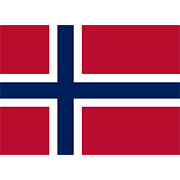Fiscal subject related
The Executive Director of Norges Bank delivered a speech at the Payments and Digitalization Conference on November 7, 2024, focused on responsible innovation in Norway's payment system.
The themes discussed at the Payments and Digitalization Conference are as follows:
- Responsible Innovation:
The need for a gentler approach to innovation in payment systems was emphasized, contrasting it with the "move fast and break things" mentality. Trust and acceptance are crucial for the functionality of money.
- Three Parameters for Payment Systems:
- Availability and Efficiency: Payments should be user-friendly, quick, and inexpensive.
- Security and Contingency Planning: The system must be resilient against disruptions and fraud.
- Inclusion: Accessibility for all users is essential to maintaining trust in the payment system.
- Current Initiatives:
Norges Bank is exploring participation in the Eurosystem’s TIPS service for instant payments, which would allow real-time transactions 24/7. The bank is also adopting the ISO 20022 messaging standard, enhancing communication across financial infrastructures and improving automation in payment processing.
- Central Bank Digital Currency (CBDC):
Research into CBDC is ongoing to assess its potential benefits for secure payments in modern contexts. The bank is cautious about rushing into implementation given the current efficiency of Norway's payment system.
- Tokenisation:
Tokenization represents assets digitally, allowing automated transactions through smart contracts. While it offers advantages like reduced risk and new business models, it also introduces regulatory challenges.
- Security Enhancements:
Increased complexity and cyber threats necessitate stronger security measures. Norges Bank is collaborating with industry stakeholders to conduct rigorous testing of critical functions to strengthen resilience against cyberattacks.
- Payment System Accessibility:
A government-appointed Payment Commission will report on ensuring simple and secure payments for everyone, including maintaining cash accessibility amid declining bank branch services.
- Challenges Ahead:
The speech noted potential threats to the "singleness of money," such as declining cash usage and the rise of cryptocurrencies, which could undermine public trust in traditional forms of money.
The Executive Director of Norges Bank’s address highlighted that while Norway's payment system is currently efficient, ongoing innovation, security enhancements, and inclusivity are vital to adapt to future challenges. The central bank remains committed to fostering a resilient payment ecosystem that meets the needs of all users while maintaining trust in monetary systems.
Other news from Norway
TLv6 Implementation Marks Significant Shift in EU’s Trust List Format
A new EU Trust List format, TLv6, will officially replace TLv5 in May 2025 as part of the updated eIDAS Regulation (EU 2024/1183). It introduces key technical changes like a new URI field, updated signature format, and optional phone number support. Organizations must update their systems to avoid signature validation failures and service disruptions, as TLv5 will no longer be valid once TLv6 take... Read more



Goods exported from the Norwegian VAT Area are exempt from VAT.
 Norway
Author: Nikola Novković
Norway
Author: Nikola Novković
Norway has introduced new VAT exemption provisions for private firms exporting goods, requiring stricter documentation and digital signatures for compliance. The updated regulation mandates detailed transaction records, verified buyer identification, and proper export documentation, ensuring transparency and better VAT refund processing. To ensure better compliance with legal requirements and im... Read more



Navigating SAF-T: Differences Between Norway's and Denmark's Tax Reporting
 Norway
Author: Ivana Picajkić
Norway
Author: Ivana Picajkić
Norway and Denmark both use the Standard Audit File for Tax (SAF-T) but with different implementation approaches and requirements. Norway's SAF-T, mandatory since 2020, is submitted only upon request, while Denmark's SAF-T is part of ongoing digital bookkeeping obligations with set deadlines. Read more



Norway: Everything You Need to Know About the VAT System
 Norway
Author: Ivana Picajkić
Norway
Author: Ivana Picajkić
Norway requires businesses with annual revenue exceeding 50,000 NOK to register for VAT, with rates ranging from 25% for most goods to 0% for select services like newspapers and international transport. VAT returns are typically submitted bi-monthly, with strict invoicing requirements and potential penalties for non-compliance. Read more



Norway Launches Evaluation for Mandatory E-Invoicing and Digital Bookkeeping
 Norway
Author: Ivana Picajkić
Norway
Author: Ivana Picajkić
The Norwegian Ministry of Finance has launched an evaluation on implementing mandatory e-invoicing and digital bookkeeping, with initial proposals expected by June 2025. This initiative aims to enhance efficiency, align with EU standards, and potentially save businesses over NOK 5 billion annually by adopting a framework similar to Denmark’s system. The Norwegian Ministry of Finance has initiated... Read more



Understanding the Importance and Benefits of E-Invoicing in Norway
 Norway
Author: Ivana Picajkić
Norway
Author: Ivana Picajkić
E-invoicing is a key element of Norway’s digital transformation, enhancing efficiency, transparency, and compliance across B2B, B2G, and B2C transactions. It is mandatory for all suppliers to public sector entities, requiring adherence to Norwegian standards and use of formats like EHF and Peppol BIS Billing 3.0. Read more



Reminder: Norway Announced New VAT Rates for 2025
 Norway
Author: Ivana Picajkić
Norway
Author: Ivana Picajkić
Norway has announced updated VAT rates effective January 1, 2025, including a standard rate of 25% and reduced rates of 15%, 12%, and 11.11% for specific goods and services. These changes aim to align tax policy with economic objectives and sector-specific support. The Norwegian Official Gazette announced the VAT rates for 2025, which will take effect on January 1, 2025. The standard VAT rate is... Read more


